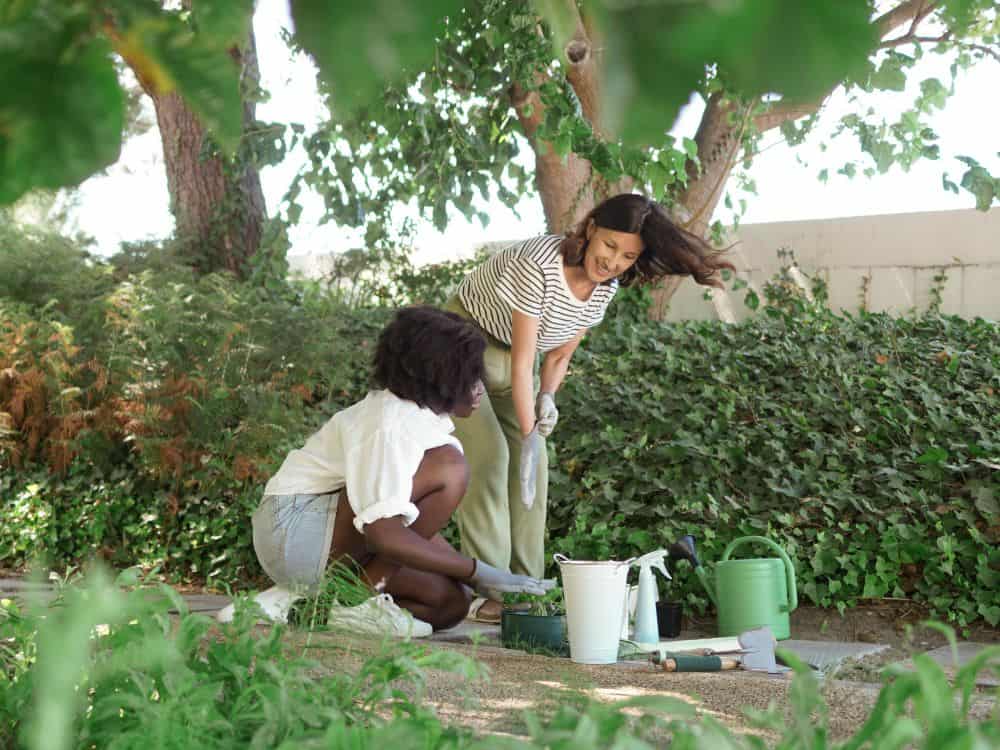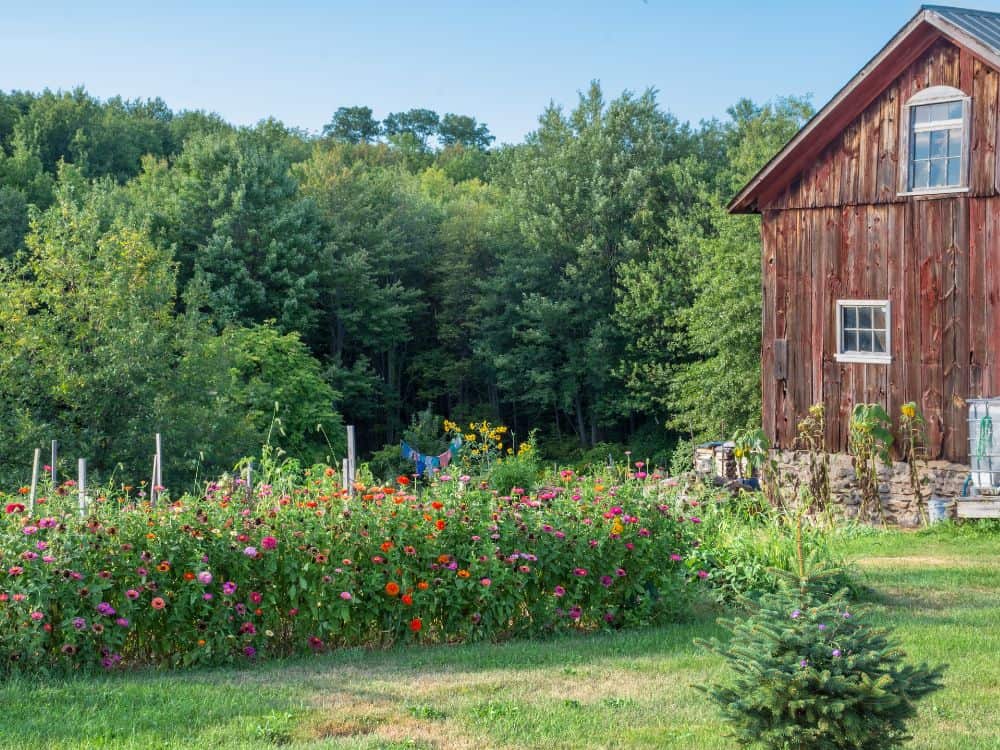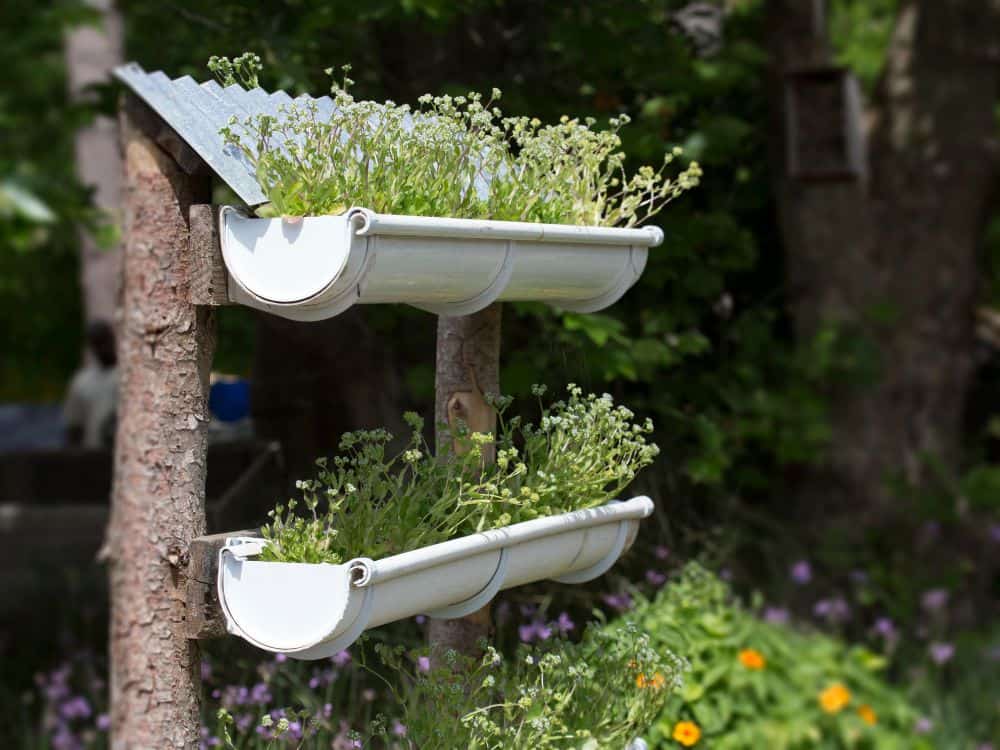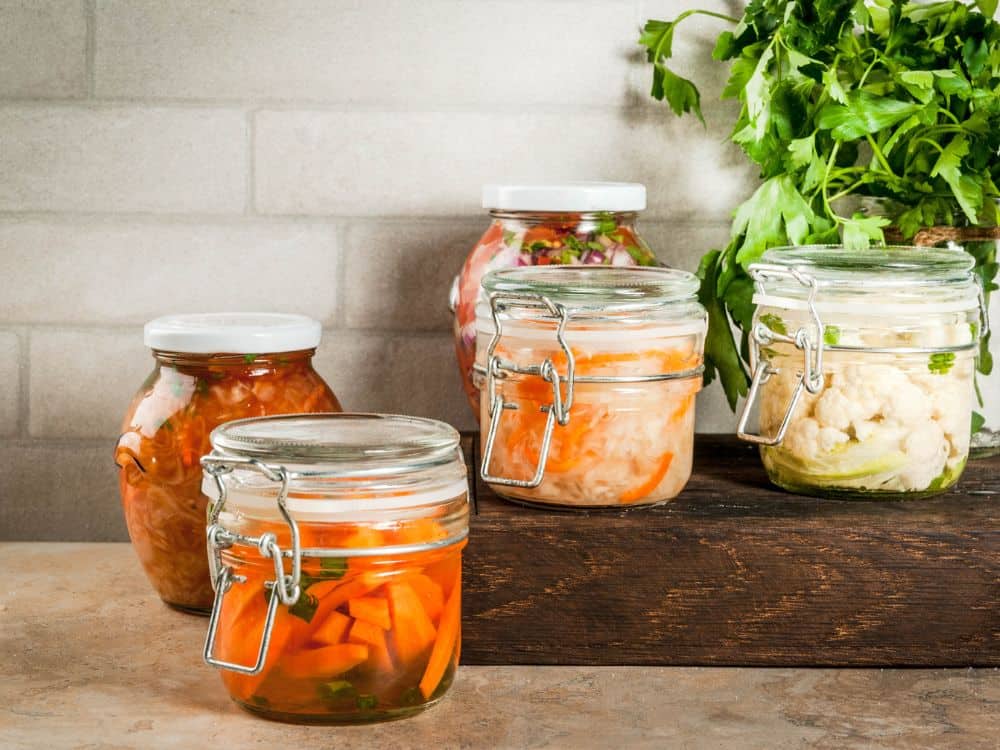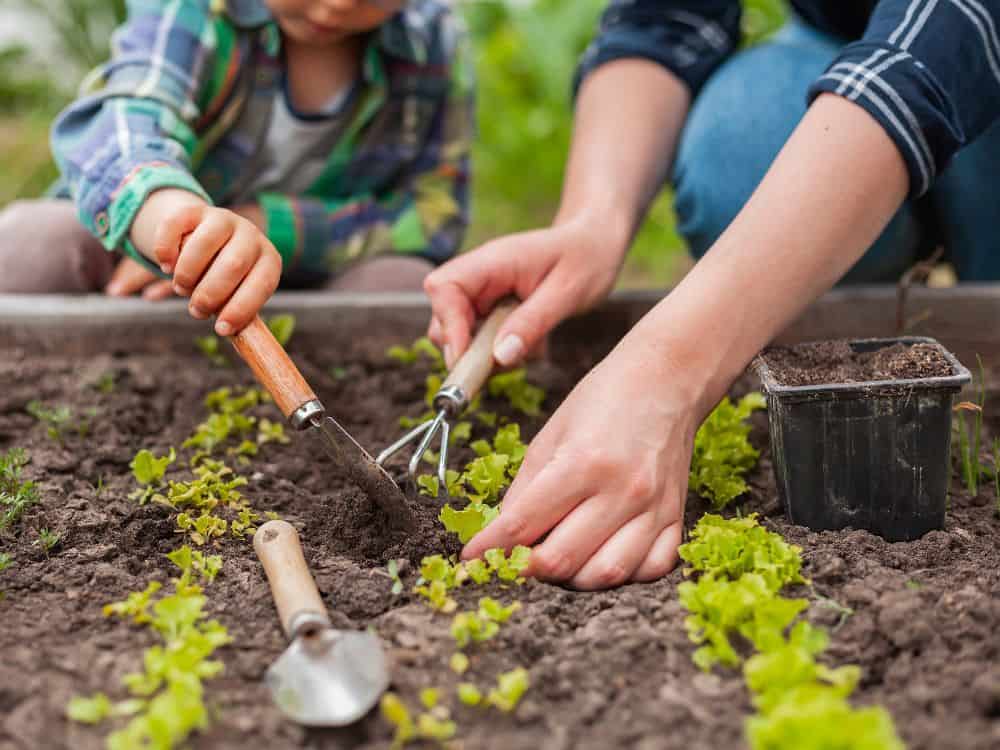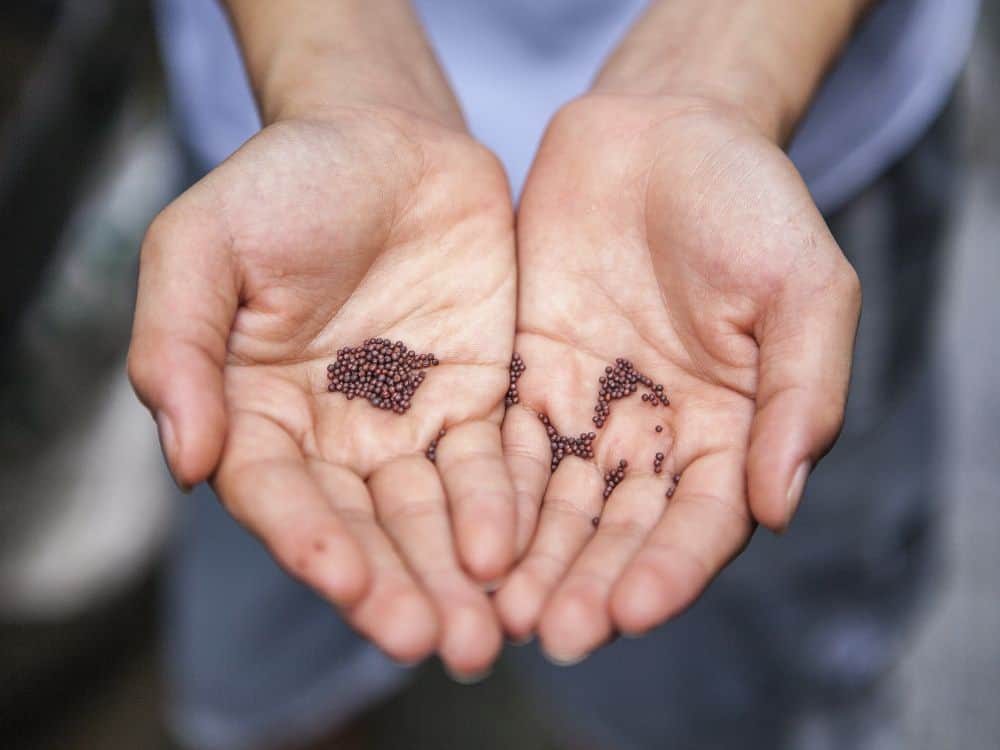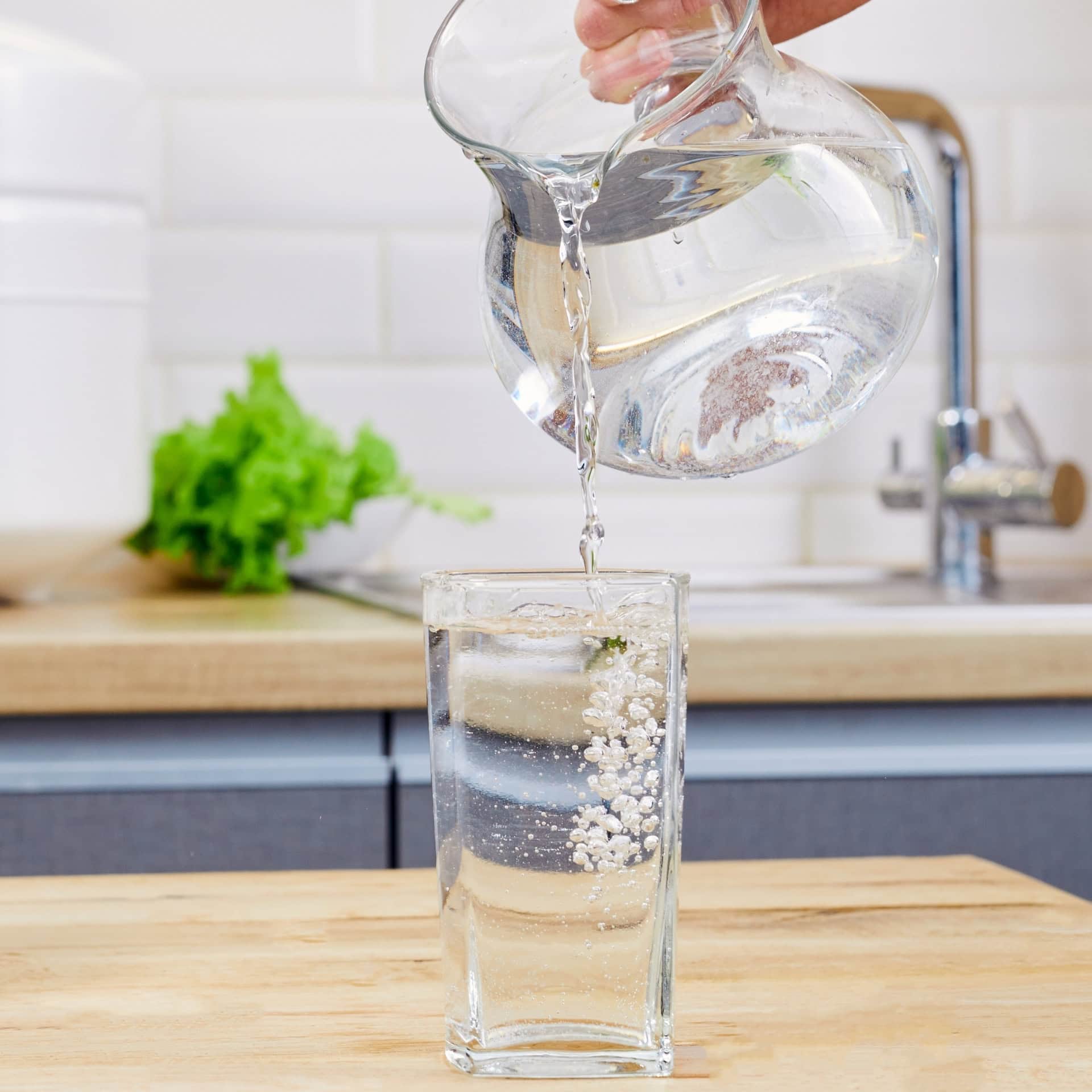Looking to embrace a simpler, self-sufficient lifestyle? Then dig into these backyard homestead ideas. After all, there’s no place like home(stead).
Following the mass exodus from urban centers in 2021 and instability that’s plagued supply chains in recent years, a spike in self-sustainability and self-sufficiency in sprawling rural areas hit an all-time high. While supply chains are said to be returning to normal, this hasn’t slowed the rising cost of groceries (and corporate profits) leading many to start placing their overpriced grocery store eggs in a different basket.
An answer to many of the modern world’s problems, backyard homesteading encourages saving, self-reliance, and shortening the supply chain.
Contents: Backyard Homesteading Ideas
- Start Composting Jump to section
- Better Your Backyard Building Projects Jump to section
- Small Homestead Garden Ideas For Growing Big Amounts Of Food Jump to section
- Make The Most Of Your Space Jump to section
- Learn To Preserve Food Jump to section
- Sustainable Soil Reigns Supreme Jump to section
- Save Seeds For A Sustainable Gardening Future Jump to section
- Water Cache To Save Cash Jump to section
- Small Animals Fit A Small Homestead Jump to section
- Learn To Lean On Others Jump to section
- Backyard Homestead Projects To Expand Your Homesteading Horizons Jump to section
What Is Backyard Homesteading?
Backyard homesteading—sometimes called small, self-sufficient, or suburban homesteading—aims for a portion of goods to be grown on one’s own land instead of purchased from outside sources.
It applies the zero waste philosophy on a small, individual scale, prioritizing a self-sustaining production cycle with little waste and a positive environmental impact.
But just like any form of sustainable living, the backyard homestead definition of progress and success is largely determined by the individual. Each homesteader (and homestead) comes complete with unique goals and abilities. A backyard patio plot may not feasibly host a milk cow, but with a little ecological gardening know-how and a lot of imagination, you can grow nearly a year of food on just a quarter acre.
Whether you’re a total beginner or a seasoned small homestead expert, this list of suburban homesteading ideas will help your microfarm flourish.
Start Composting
Step number one to starting your own homestead: start composting! Whether you have patios or parcels of land, composting will turn your kitchen scraps into the soil for your backyard bounty to grow.
Composting comes in many forms, but whether you’re using indoor compost bins, outdoor bins, or heaping piles, there are heaps of benefits to both the planet and your self-sufficiency. Diverting food waste and other compostable materials from our local landfills only scratches the surface; composting is the literal foundation of your backyard sustainability cycle.
From it, you get (almost) free soil and fertilizer from which all other backyard homestead garden ideas can grow.
Better Your Backyard Building Projects
On the road to a sustainable harvest, many homesteaders discover their dreams are bigger than their wallets. Keep in mind that most online blogging farmers began the same way you are: with a dream that sometimes looks like recycled materials, mismatched paint, and a lot of make-dos.
Pinterest-worthy gardens and farms rarely start out looking that way.
Don’t bug out on pricey beds; Instead, use excess building materials (Home Depot and Lowe’s will usually happily give you their scraps for free), visit thrift shops for pre-loved pots, and get creative with your backyard homestead garden design. There are countless garden recycling ideas out there that not only prevent usable materials from going to waste, but will save money in your homestead budget.
If you plan on building a lot and have a little startup capital, consider purchasing a second-hand wood mill to use the trees cleared for raising farm animals or outbuilding projects on your own land to repopulate it with the needed structures.
Small Homestead Garden Ideas For Growing Big Amounts Of Food
Just because you have a smaller plot of land doesn’t mean you have to compromise on food production. There are plenty of ways hat will help you mimic the bounty of rural country living. Immerse yourself in space-saving organic farm tricks like:
- Vertical gardening: Trellises, container towers, and high structures like walls or doors for support to grow up and not out. This maximizes your space without hindering the vegetable type you can grow. You can build an effective vertical garden from wooden pallets collected for free from hardware stores.
- Companion planting: Interplanting or companion planting increases yield, deters pests, and saves space.
- Season-extending design: Greenhouses, moveable containers, and covered areas can extend your growing (or seed-starting) season for the fruits and vegetables that take a little longer to mature.
- Succession planting: It can be enticing to start all seeds and transplants at once, but planting different crops in a succession maximizes all the food without requiring multiple beds. Start your crops that prefer cooler weather first (like peas) in the early season, then replace them when the time comes with those who prefer hot weather (like beans).
- Multiple plantings: Know which plants can thrive in seasons and plan your starts accordingly. For example, spinach has a very short maturation time and the savvy gardener can usually get two or even three different spinach crops per season by staggering planting times.
Make The Most Of Your Space
Every seed, tree, or bush planted has the potential to provide for your farmstead, which makes planning your backyard homestead layout very important. Edible garden hedges, fruit trees as a privacy fence, and berry bushes for a border make use of valuable food-producing real estate in your backyard.
Don’t forget to think outside the (garden) box, too. Foraging what grows wild in your area alleviates a little growing pressure and makes use of the already existing natural resources (Dandelion wine, anyone?).
It’s also helpful to create a backyard homestead seasonal planner so that you know what things need to be accomplished by when so you don’t miss seasonal planting windows.
Learn To Preserve Food
Now it’s time to put the home in ‘homesteading skills’. In the heat of summer, when everything is producing, blooming, fruiting and shooting, lettuce not forget most zoning requires a period of “rest” for the garden. This means all the food in your overflowing backyard must be preserved, so it can support your family during this rest period.
Learning the art of food preservation—whether through canning, picking, fermenting, curing, dehydrating, or blanching and freezing—requires a bit of kitchen know-how, some empty jaw, and a comprehensive guide (especially if pressure canning, where cook times matter).
Local thrift shops and used bookstores often have a dusty old gem with all our grandma’s canning secrets. Invest in a large capacity pressure canner, as this will make the process more efficient and drastically increase the number of foods you can safely preserve—namely high acidic foods (i.e. tomato and pasta sauce, salsa, pie filling, jams, preserves) and meat, which can’t be canned safely using a standard water bath method.
Block out plenty of time for this in your planner, as it takes up much of your time initially but saves you plenty in the coming months.
Sustainable Soil Reigns Supreme
You know how sustainable beauty is skin deep?
Well, sustainable gardening is soil deep. Healthy, nutrient-rich soil is what makes all kinds of homesteading–whether classic off-grid or modern suburban homesteading—possible.
Regardless of the organic seeds, perfectly placed beds, and top-of-the-line watering systems, your backyard homesteading dreams will turn to dust without focusing on the soil. Because potting soil is so readily available these days, understanding and managing soil microbes has become a complex and often overlooked portion of gardening. Yet proper soil health will play the biggest role in the success of your garden or organic farm.
Here are ways to start naturally nurturing your soil:
- Crop rotation: All plants consume different nutrients from the soil, which is why it’s a good idea to keep it balanced by avoiding planting the same crop in the same place consecutively.
- Worm farms: Worm farms, in cahoots with composting, are an unbelievably easy and beneficial additive to your soil microbiome. Brew worm tea, use soil for seedlings, or deposit mature wrigglers into your garden for beautiful blooms.
- Beneficial insects: Supporting your garden with beneficial insects (homegrown or purchased from your local garden shop) keeps the nasty pesticide chemicals and non-helpful bugs from your soil while supporting the growing plants. Not to mention, it helps increase biodiversity on your suburban homestead.
- Beneficial blooms: If beneficial insects need reinforcements, companion planting and trap cropping help to deter the bad bugs.
Save Seeds For A Sustainable Gardening Future
If you have a yearly compost heap, it’s common to find a rogue squash plant or tomato shooting for the sun in the spring.
Mimic nature’s seed-saving practices by penciling this practice into your backyard homestead seasonal planner. It’s the gift that keeps on giving. Guaranteeing healthy, unaltered seeds from your own organic farm year after year is self-sufficient backyard homesteading 101. Just make sure you start out by planting heirloom seeds, since many GMO and hybrid varieties are intentionally designed so you can’t save them year over year.
Certain seeds—like beans, peas, lettuces, and tomatoes—are tucked into the “simple seed saving” category and only require clean, dry seeds to be stored in a temperature-controlled, dark area until the following season. Other seeds from biennial crops like carrots and beets can be more difficult to obtain, as they require two growing seasons to set seed (which means proper over-wintering of the plant) and strategic replanting. If you’re growing potatoes, set aside a healthy number from your final sustainable harvest, storing them in a cool, dark, and slightly damp (yet well ventilated) place over the winter to produce sprouts that will act as “seeds” for next year.
Knowing each seed’s storage requirements before the following season kicks off is necessary for seed starting the following year.
Water Cache To Save Cash
Speaking of saving, another important commodity to save is water. Get your feet wet with rain catchment systems, gray water recycling, and diverting natural runoff to save money while saving the planet’s most precious resource.
Rainwater Catchment
There are tons of DIY rainwater harvesting systems, depending on your space and level of expertise.
A low-maintenance option is installing gutters to catch and trap rainwater into a catchment system that can be used later to water your garden. Putting gravity to work on soaker hoses or drip irrigation systems is often enough to water a bed without any extra input from your water system, well (or wallet).
Using Gray Water
With upwards of 29 billion gallons of water used by US households daily, recycling greywater from your home to irrigate ornamental gardens, fruit trees, or root vegetables is an environmentally friendly option (but be sure to check you’re allowed in your state!).
If doing this, you’ll want to be extra careful what kinds of chemicals get washed down the drain, opting only for biodegradable and natural soaps—as if you needed more reason to switch to non-toxic dish soap, laundry soap, shampoo, and body wash.
Tapping Naturally Occurring Water Sources
Larger acreages often come with water rights to streams, creeks, and ponds. Diverting this water (taking care not to disrupt naturally occurring environmental processes) can water your garden with untreated, clean H2O. If you’re still in the homestead land shopping phase, consider a property’s irrigation rights before buying.
Aquaponics
Consider a closed-loop ecosystem like aquaponics for your backyard fishpond and surrounding plants.
Aquaponic systems are similiar in growing system to hydroponics, though the latter is slightly more plant-growth-focused and tends to worry less about creating a balanced ecosystem.
Small Animals Fit A Small Homestead
Flocks of wool-producing sheep and dairy cows padding around a pasture are rather idyllic, but not possible for those who are homesteading on a smaller plot of land.
Choosing animals or determining stocking density based on land size should be considered above all else. Returning briefly to soil health, overstocking or choosing improper backyard homestead animals for your land will only foster problems in the future as your land becomes depleted and overrun. Wet areas can suffer irreparable damage if heavy cattle are put on too early in the spring, whereas sheep are a lighter option with similar grazing habits.
The most important of all backyard farm ideas is to keep things manageable. Even if you have lots of land, raising large livestock requires a lot of expertise, equipment, and time, so it’s best not to go hog wild (literally) and get yourself in over your small homesteading head right away. Worry not! These are the best animals for a small homestead:
Bees
Not technically an animal, but a very beneficial insect. Honey bees pollinate your garden and create antimicrobial and antioxidant-filled local honey to replace store-bought sugars for home goods and replace cough syrups as a natural cough remedy. Honey bees require very little space; even your closest neighbors likely won’t mind pollinating their gardens (or a jar of sticky honey) to sweeten the deal.
Chickens or Quail
Chickens produce fresh eggs daily, and provide nutritious meat for the backyard homestead. Raising chickens or quail reduces trips to the store, all while recycling kitchen scrap and adding compost materials to the pile. As an added benefit, chickens in the garden can help eliminate some pesky garden bad guys (like aphids).
If full-sized chickens are still too big to fit into your small homestead layout, consider a bantam breed or raising quail. Quail provide eggs and meat as well, but in a much more compact package, making them an excellent choice for a backyard urban homestead—or an easy way to dip your toes into the world of poultry farming. They require very little space per bird and, unlike chickens that take over six months to mature and begin producing eggs, quail begin laying eggs at only six weeks old.
Chickens are relatively quiet farm animals, with quail quieter still by only offering a sing-songy tune. Homesteading in the suburbs just became a lock flocking easier!
Rabbits
Raising farm animals like rabbits is the ultimate balance between low-maintenance and high reward. Rabbits create nutrient-dense pellets that can be applied directly to your garden for fertilizer. They also provide a high-protein option to complement your garden diet.
Raising rabbits means you only need compact cages, so even on just a quarter acre, you have your own fertilizer-making, meat machines.
Muscovy Ducks
Muscovies are ideal for small-scale homesteading. Muscovy ducks make a low hissing sound to communicate, are rarely aggressive, and provide nutrient-dense eggs and meat for the farm-ily.
Ducks typically enjoy nesting on the ground in coops that don’t take up much space. They enjoy swimming in water, where they clean their nostrils (which can then be dumped into the garden!).
Pygmy Goats
Pygmy goats provide gallons of milk in a pint-sized package. Perfect for small-scale homesteading, the Pygmy is a friendly goat breed that requires little space (but adequate mental stimulation!). If a family milk cow isn’t in the cards for you, consider a smaller goat (or two) for your milking needs. A milking goat will have you churning butter and making your own cheese or yogurt in no time.
They’re also excellent for helping your eco-friendly landscaping efforts by trimming down grass and weeds. But beware: goats eat almost anything and are nimble escape artists, so be sure their designated grazing area is secure.
Learn To Lean On Others
Self-reliant doesn’t mean you have to go it alone. Relying on your neighbors for gardening tips, zoning information, and area-specific fruit trees helps to establish your own self-sufficient homestead. Swap seedlings, soaps, homesteading guides, and other goods from your own backyard to benefit your neighbors and fill in the gaps of things you don’t produce yourself.
Backyard Homestead Projects To Expand Your Homesteading Horizons
Whether you’re looking for urban backyard ideas or just purchased an off-grid homestead, your options are many when it comes to growing, cooking, preserving, canning, and keeping all the food from your own backyard:
- Firepit: Fire pits are excellent places to (safely) burn excess/scrap wood materials or toss a cast iron pot on for a low-energy dinner. Filtering through the list of DIY homestead ideas for a fire pit can be overwhelming. Keep it simple with a raised or dug-in fire pit.
- Smokehouse: Building the backyard homestead means building projects that last a lifetime and serve a purpose year-round. Building a smokehouse is a safe and guaranteed way to preserve meats, cook dinners, and showcase your (outdoor) kitchen know-how.
- Root cellar: After preserving your homegrown bounty, you’ll need a place to store it. A cold, dry place is best. Consider adding a makeshift cellar area to your basement or digging one into the side of a bank.
- Solar power: Solar panels are an essential among off-grid homestead ideas, but even if you still utilize on the eclectic grid to a large extent, you can start reducing your reliance on it little by little with portable solar panels to charge small devices, adding solar lights to illuminate walkways, or using solar-powered bug-repellent lights.


